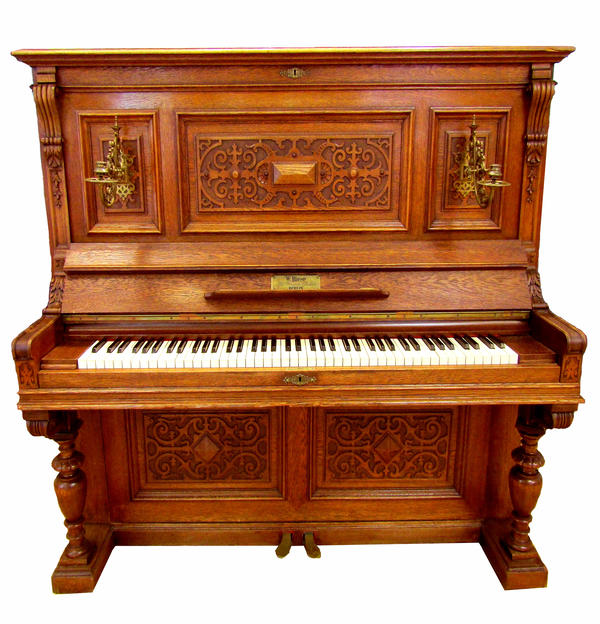The upright piano is the direct descendant of the fortepiano the construction of which was invented by Bartolomeo Cristofori, an expert Italian maker of musical instruments, around 1709. The Italian word ‘piano’ literally means ‘small fortepiano’. This instrument was not intended for concerts; it was played only in small rooms.
Upright Piano
Время создания
1895-1899
Размер
144x140x73 cm
144х140х73 cm
144х140х73 cm
Техника
Wood, metal, ivory
Выставка
3
Открыть в приложении#1
Upright Piano
#3
#10
The main difference between the upright piano and the fortepiano was that in the former the strings, internal mechanism and resonating surface — plate — were placed vertically, rather than horizontally, which made it possible to reduce its size substantially.
#11
The first upright piano was built by an American inventor named John Hawkins in 1800. Independently of him, a similar instrument was conceived by Austrian inventor Mueller a year later. He added a pedal to the construction to regulate the sound the piano made.
#12
The piano construction was simple: a special hammer inside the instrument struck a string when a certain key was depressed resulting in sound vibration. An in-built retracting mechanism made the hammer rebound to stop it from pressing the string — hence a vibrant sound from the string. Later and more advanced models featured the double escapement action, in which the hammer travelled back only halfway thus enabling trills and fast fingering.
#4
The W. Biese mark inside the piano
#5
Russia saw the spread of the piano closer to the 1820s. The main makers of the time were Karl Wirth and Johann Tischner.
#13
The museum exhibition shows a piano by Wilhelm Biese. It is about as old as Klodt’s mansion itself: it was built in 1895-1899. It is known that it did not belong to the first proprietors, the Klodt merchants, and joined the museum collection after the opening of the Children’s Art Gallery. Before that, the mansion housed a piano from the Becker Company, which was popular in Russia at that time.
#14
The piano case is made from wood and decorated with two candleholders and carved designs. The bottom part of the instrument is decorated with two carved columns. The piano features pedals, which regulate the sound the instrument produces. The inside of the case carries the mark of the manufacturer, W.Biese, and the name of the city, Berlin.
#15
Wilhelm Biese owned a fortepiano factory, which he opened in Berlin in 1851. There is hardly any information about his life. In 1871, the ownership of the factory passed to Reinhold Scharlter. The production ceased there in 1976.
читать дальшескрыть
00:00
00:00
1x
Upright Piano
Время создания
1895-1899
Размер
144x140x73 cm
144х140х73 cm
144х140х73 cm
Техника
Wood, metal, ivory
Выставка
3
Открыть в приложении
Поделиться



